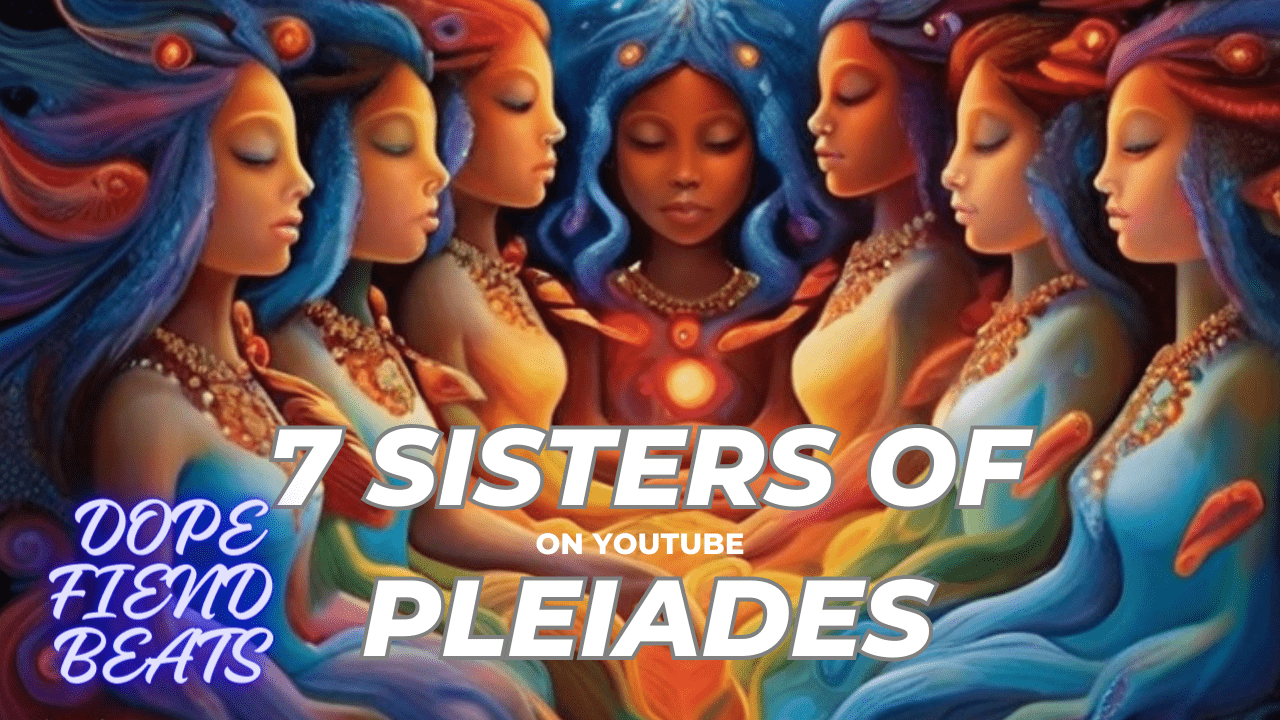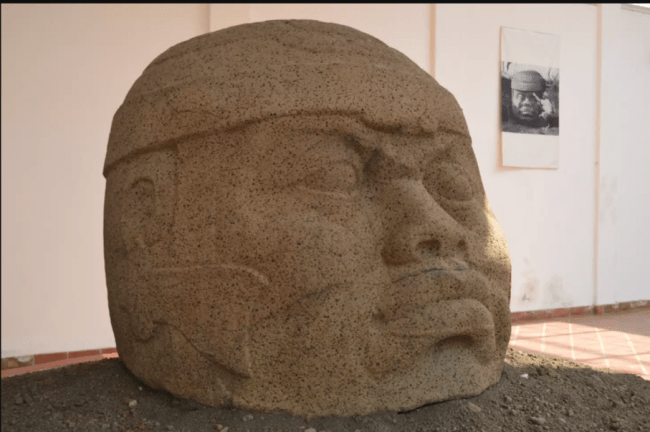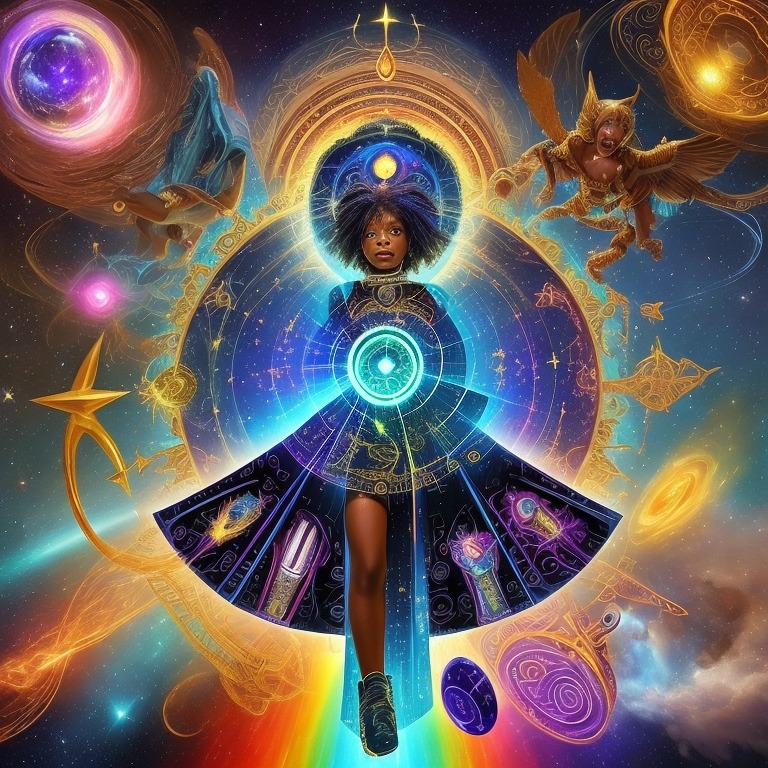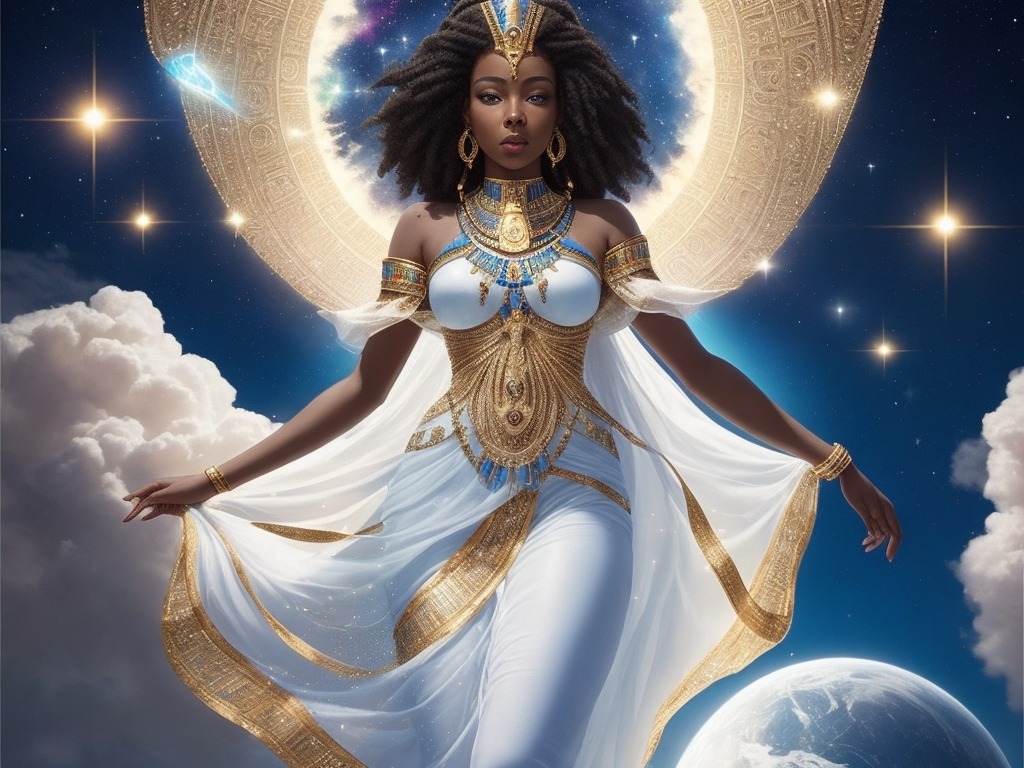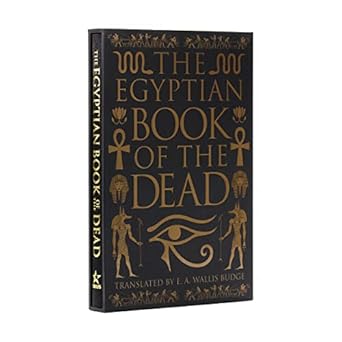by Steafon Perry
Dispelling Myths and Revealing the Truth About Melanin
Melanin, a compound derived from the Greek word “meals,” meaning black or dark, is made up of carbon, hydrogen, oxygen, and nitrogen—a natural amino-acid pigment found in living organisms. Melanin is a Compound Melanin cells, particularly melanocytes, give rise to three primary types of melanin: eumelanin, pheomelanin, and neuromelanin. Eumelanin, the darkest form, consists of brown and black eumelanin, while pheomelanin is the lightest, never going darker than maroon. Neuromelanin, found in the brain and central nervous system, plays a crucial role in their optimal function. The Human Body and Melanin’s Role In the human body, melanin not only contributes to pigmentation but is also essential for sustaining life, particularly due to its significance in the central nervous system’s operation. The production of eumelanin or pheomelanin is determined by an individual’s DNA, leading to variations in skin tone and pigmentation. The differences in skin color are attributed not to the quantity of melanin produced but rather to the type of melanin determined by one’s DNA. Skin Pigmentation and Melanin Eumelanin, known as “dark” melanin, contains a higher concentration of dark carbon atoms than pheomelanin, offering advantages in absorbing UV radiation and protecting it from skin damage. Additionally, the increased efficiency in harvesting the sun’s UV rays might potentially provide metabolic advantages for biological processes in the human body. The source of melanin can be traced back to the elements carbon, hydrogen, nitrogen, and oxygen, which originated from exploded stars during the formation of the Universe. Consequently, melanin, being composed of these elements, is likely a product of the Universe, possibly associated with phenomena like Black Holes and dark matter. While melanin holds neutral chemical properties, the significance attributed to it has historical and psychological contexts, particularly concerning the effects of slavery and colonialism. Nonetheless, there is an emerging field exploring the biological, psychological, and spiritual advantages associated with higher levels of eumelanin in humans, potentially impacting areas such as culture, art, and spirituality. What is the Source of Melanin? The assertion that “melanin is carbon and has a molecular structure of six protons, six neutrons, and six electrons, equaling 666, or the mark of the beast,” is debunked here. The information presented demonstrates the inaccuracy of this claim. To verify or disprove such claims, scholarly sources like Google Scholar are invaluable. The value of melanin has been documented; it is worth $500 a gram, significantly more than gold. This refutes the notion that melanin is equivalent to carbon, given that 25 grams of carbon are worth only $234. 666 and Melanin The association with 666, as described in the Bible, does not align with the concept of God creating humankind in his own image. Furthermore, scientific evidence suggests that the first humans traced back to Africa had high levels of melanin in their skin. When analyzing the atomic composition, it’s evident that carbon-12 consists of six protons, six neutrons, and six electrons. However, melanin’s chemical formula (C18H10N2O4) indicates its composition of carbon, hydrogen, nitrogen, and oxygen. Melanin is a chemical compound, while carbon is an element. Moreover, a search on Google Scholar for “melanin is carbon” yielded no matching articles, indicating the absence of scholarly support for this claim. The molecular structure of melanin, still not fully understood, does not align with the known structure of carbon. Is This Blasphemy? Allow us to explain why this is blasphemy. The number 666 refers to Revelation 13:18, which states: “Here is wisdom.” Let him who has understanding count the number of the beast since it is the number of a man, and his number is six hundred threescore and six. According to Genesis 1:27, God created humans in His likeness, including males and females. “The first humans were Adam and his wife.”In Genesis 3:20, Adam refers to his wife Eve as the mother of all living things. Why would God create two beings in his own image only to give them the mark of the beast? Does that imply that God is the beast? This is the blasphemy we mentioned previously. The most recent common ancestor of all humans is from Africa. Mitochondrial Eve lived approximately 200,000 years ago in East Africa. “Y-chromosomal Adam” was an individual who lived between 200,000 and 300,000 years ago. If God made us in his image and science demonstrates that the early people had high levels of melanin in their skin, it’s easy to see why Atheism is on the rise. Carbon is an Element, Right? Is it accurate that carbon contains six protons (positively charged particles), six neutrons (uncharged particles), and six electrons (negatively charged particles). Okay, let’s see. Go to scholar.google.com. It’s like a hidden, secret area of Google that most people are unaware of. Search for six protons, six neutrons, and six electrons.The first of the 217 results should be titled “The isotopic mass defect: a tool for limiting molecular formulas by accurate mass.” It comes from Analytical and Bioanalytical Chemistry, August 2010, Volume 397, Issue 7, pages 2807-2816. The article states that 12 C is made up of six protons (1.007277 u each), six electrons (0.000548597 u each), and six neutrons (1.008665 u each). The book Natural Kinds by MA Khalidi, – The Oxford Handbook of Philosophy of Science, 2016 says the following on page 411: “An atom of carbon-12, for example, has six protons, six neutrons (each of which consists of three quarks), and (in a nonionized state) six electrons…” Allan B. Cobb tells us on page 18 of his book “The Basics of Nonmetals” “The majority of carbon exists in the form of the isotope carbon-12, or C-12. Carbon-12 is extremely stable. It contains six protons and six neutrons. Carbon-12 accounts for approximately 98.9 percent of total carbon. So, yes, “carbon” contains six protons, six neutrons, and six electrons. Carbon-12, precisely, accounts for 98.9 percent of all carbon. The chemical formula of melanin is C18H10N2O4. A melanin molecule contains 18 carbon atoms, 10 hydrogen atoms, two nitrogen atoms, and four oxygen atoms. Melanin contains carbon, hydrogen, nitrogen, and oxygen.What is
Exploring the Enigma: The Absence of Ancient Documentation on the Exodus
Introduction In dissecting the biblical narrative of the Israelites’ Descent and Great Exodus from Egypt, it becomes imperative to scrutinize historical archives for corroborative evidence within the Egyptian milieu. Silent Annals: The Curious Void The intricate series of events in this story include Joseph’s prophetic abilities, Jacob’s Hebrew family’s journey from Canaan, and the powerful plagues brought by Moses. The deaths of Egypt’s firstborn, including the Pharaoh’s heir, and the Pharaoh’s demise in the Red Sea would logically be meticulously recorded by the knowledgeable scribes tasked with documenting daily life in ancient Egypt. Historical Void Curiously, the annals of the time remain conspicuously silent, bereft of any contemporaneous inscriptions documenting these momentous occurrences. Despite the explicit duty of Egyptian scribes to record pivotal events, a void persists in the historical records about the biblical chronicle of the Israelites’ Descent and the subsequent Great Exodus. This silence prompts a perplexing inquiry into the unspoken history, revealing an intriguing absence of documented evidence. Inscriptions and Discoveries Noteworthy is the discovery of the name “Israel” inscribed on a pharaonic stele, albeit devoid of any connection to Moses or the Exodus. The Merneptah stele, dating around 1219 BC, places the Israelites in Canaan but omits any mention of their prior residence in Egypt or their departure in a monumental Exodus led by Moses. The scientific quest for evidence regarding the Exodus encounters an obstacle, as the official Egyptian records remain resolutely silent on Moses and his followers. Breaking the Silence: Historical Revelations The clandestine suppression of Moses and the Great Exodus from official Egyptian chronicles eventually yielded to the pens of Egyptian historians. Their detailed accounts, emerging from the shadows of deliberate omissions, divulge a rich tapestry of narratives surrounding Moses. Despite an era of suppression, popular traditions endured, venerating Moses as a divine figure. The Macedonian Ptolemaic Dynasty, which succeeded Alexander the Great’s reign in 323 BC, ensured the inclusion of Moses and the Great Exodus in historical narratives. Manetho’s Account: A Closer Look Manetho, the esteemed 3rd-century BC Egyptian priest and historian, recorded Moses as an Egyptian figure, not Hebrew, living during Amenhotep III and Akhenaten’s reigns (1405 to 1367 BC). The Israelite Exodus, according to Manetho, unfolded during the reign of Ramses, succeeding Amenhotep III. Flavius Josephus, the 1st-century AD Jewish historian, preserved fragments of Manetho’s account, shedding light on a complex narrative involving divine visions, lepers, and political upheaval. Clarification and Correction It is crucial to correct Josephus’s assertion that Manetho invented a king named Amenophis; historical scrutiny identifies Amenhotep III as the monarch in question. The veracity of Manetho’s account gains credence, considering the subsequent rise of Amenhotep’s namesake, Amenhotep, son of Habu, to the esteemed position of Minister of all Public Works. Symbolic Impurity: Understanding Manetho’s Perspective Manetho’s portrayal of rebels as “lepers and polluted people” extends beyond literal interpretation, reflecting their perceived impurity due to a rejection of Egyptian religious beliefs. Josephus further expounds on the rebel leader’s laws, emphasizing a renunciation of Egyptian gods and customs. These oral traditions, enduring for centuries, found their written expression during the Macedonian Ptolemaic Dynasty. Parallel Narratives: Akhenaten and Manetho’s Account Intriguingly, Manetho’s account aligns with the historical context of Amenhotep III and his son Akhenaten, who initiated a religious revolution by abandoning traditional polytheism in favor of monotheistic worship centered on the Aten. The parallels between Akhenaten’s actions and Manetho’s narrative suggest a historical basis for the events surrounding Moses and the Exodus. Perspectives: Avaris vs. Rameses Dvergent While biblical and Manethonian accounts differ on the starting point of the Exodus—Rameses in the Bible versus Avaris in Manetho’s rendition—the latter’s association of Avaris with the Asiatic Hyksos rulers aligns with archaeological findings. Regrettably, modern scholars, influenced by Josephus’s misidentification, have often dismissed Manetho’s account as unhistorical, diverting the quest for evidence away from the historically contextual path. Conclusion: Unraveling the Enigma In conclusion, the enigma of the Exodus persists, intertwined with historical fragments and obscured by divergent narratives. The meticulous examination of ancient records and a nuanced understanding of Manetho’s account beckon us to reevaluate established perspectives, potentially unveiling new dimensions to this enduring mystery.
Pleiades Dreamtime and the 7 Sisters
Exploring the Mysteries of an Ancient Myth The narrative surrounding the Seven Sisters, often referred to as Dreamtime, stands as one of the most ancient tales in existence. This global narrative revolves around a man, often depicted as a hunter, pursuing a group of young women, commonly sisters, who, to safeguard themselves, are transformed into celestial bodies. Thanks for reading Steafon’s Substack! Subscribe for free to receive new posts and support my work. In this article, we will delve into the depths of human history to explore the origins and evolution of this ancient tale. We will uncover intriguing mysteries surrounding the Pleiades, the enigmatic label of the “seven sisters,” and the global resonance of this myth in both Greek and Australian cultures. Join us on this journey as we unravel the secrets of Pleiades Dreamtime and the 7 Sisters. The Pleiades: A Youthful Cluster in the Cosmic Timeline The Pleiades cluster emerges as a relatively youthful assembly of stars, around 125 million years old. While this fact holds astronomical interest, the crucial aspect lies in determining when humans began documenting these celestial formations in their historical records. The earliest written evidence of human awareness of the Pleiades dates back to 2357 BCE in Chinese astronomical literature. Visual representation comes in the form of the Nebra disk, approximately 3,600 years old, discovered in Germany, depicting the Pleiades symbolically. Ancient Egyptian Beliefs and the Pleiades According to ancient Egyptian beliefs, the Pleiades, also known as the Seven Stars, were not solitary luminaries but focal points in a cosmos teeming with inhabited planets and advanced beings. This belief adds a layer of intrigue to the myth surrounding the Pleiades. The Galactic Conflict in the Pleiadian Star Cluster The narrative takes an intriguing turn when we confront a galactic conflict in the Pleiadian star cluster. The war, initially a struggle for planetary dominion, unraveled between the Lyrians and the Sirens, leading to profound consequences. To comprehend the deep-rooted connection between Earth and the Pleiadian star cluster, we must traverse the annals of history. A significant chapter unfolds in ancient Egypt, where the practice of mummification transcends mere preservation. The Great Pyramids and the Celestial Tribute Aligning with the celestial rhythm, the Orion star cluster played a pivotal role in ancient Egyptian architecture. Approximately 2500 years ago, the alignment of the Great Pyramids at Giza with the Orion star cluster marked a celestial tribute. The pyramid, far from a mere monument, emerges as a multifunctional stone computer. Intricately woven into its structure are calculations, hydro-generators, and the generation of static electricity. The Pyramid’s Shafts and Universal Communication Principles Venturing further, the pyramid’s shafts, meticulously aligned with specific stars, were conduits for communication. These shafts, designed to transmit hydrogen frequencies, hint at the Egyptians’ understanding of universal communication principles. The Great Pyramid, a nexus of energy, held the potential to transmit information across the cosmos. Ancient Civilizations: Technology and Spiritual Wisdom As we explore the mysteries of ancient civilizations, it becomes evident that they harnessed technology and spiritual wisdom in unison. The ancient Egyptians, in their pursuit of immortality and communion with higher realms, left behind a legacy that resonates with the fundamental principles of quantum entanglement. The Greek Mythology Connection: Pleiades and Orion These stars, named after characters from Greek mythology, namely the seven daughters of Atlas and Pleione, play a central role in the Greek version of the Seven Sisters myth. Pleione and her daughters, pursued by the colossal hunter Orion, seek refuge in the intervention of Zeus. The divine protection transforms the young women into doves and eventually into stars in the constellation of Taurus, forming the Pleiades. The Captivating Drama of Divine Actions and Mortal Pursuits The narrative takes a captivating turn with the immortalization of Orion, who, placed in the sky, continues to chase the Seven Sisters. Zeus’s assistance, however, comes with consequences, as he becomes entangled in his own affairs with the sisters. This interplay of divine actions and mortal pursuits adds layers to the myth, creating a rich tapestry of celestial drama. The Dreamtime Stories of Australia’s First Nations The global prevalence of stories involving seven sisters extends beyond Greek mythology, reaching the Dreamtime stories of Australia’s first nations. Known as the Meamei, these seven sisters are pursued by the Berai-Berai, young men leaving gifts and vying for their affections. The stories intertwine with rituals, water motifs, and celestial observations, offering a distinct cultural flavor. Exploring the Origins: Shared Ancestry or Coincidence? As we explore the similarities between the Greek and Australian narratives, questions arise about the origins of these stories. Did they stem from a shared ancestry or mere coincidence? While it is difficult to ascertain the exact origins, it is plausible that these stories emerged independently in different cultures, influenced by similar celestial observations and human experiences. Frequently Asked Questions 1. How old is the Pleiades cluster?The Pleiades cluster is approximately 125 million years old. source 2. Why are the Pleiades called the seven sisters when there are only six stars visible?The enigma of the Pleiades being labeled the seven sisters, despite only six stars being visible to most observers, remains a mystery. It is believed that the missing seventh sister may have faded over time or is simply not visible to the naked eye. source 3. How did the myth of the Seven Sisters spread across different cultures?The myth of the Seven Sisters, with its striking similarities, managed to span the globe and find resonance in both Greek and Australian cultures. The spread of this myth can be attributed to various factors, including cultural exchanges, migration, and shared human experiences. source 4. What is the significance of the alignment of the Great Pyramids with the Orion star cluster?Approximately 2500 years ago, the alignment of the Great Pyramids at Giza with the Orion star cluster marked a celestial tribute. This alignment, along with the precision of the equinoxes, showcases the profound astronomical knowledge possessed by the ancient Egyptians. source 5. How did the
Unraveling America’s Lost Connections to the Ancient World
Rediscovering America’s Ancient Settlers: Challenging the Established Paradigms Archaeological discoveries challenge long-held beliefs about the origins and antiquity of America’s earliest civilizations. Compelling evidence suggests advanced cultures like the Olmecs may have flourished in Mesoamerica as early as 1700 BCE. Thanks for reading Steafon’s Substack! Subscribe for free to receive new posts and support my work. Further revelations point to cultural exchanges between ancient Egypt, South America, and other Old World societies. Sites in Peru, Mexico, and along the mysterious 33rd parallel north also share intriguing similarities worthy of serious study. These findings are revolutionizing our understanding of pre-Columbian history. Pushing Back Dates for Mesoamerican Civilization Radiocarbon dating continually pushes back establishment dates for locales like Mexico’s Xochimilco site to 1700 BCE, contemporaneous with Egypt’s Old Kingdom—a development demanding open-minded evaluation. Recent excavations uncovered Olmec-style artifacts at San Lorenzo and Tres Zapotes from 1500–1000 BCE. At sites like La Venta, radiocarbon tests date habitation to 1200 BCE. This accumulation of chronometric evidence suggests a gradual development, with classic Olmec traditions crystallizing from earlier phases dating to the 2nd millennium BCE. Rather than appearing fully formed around 1200 BCE, their sophisticated art, architecture, and culture evidence much deeper foundations. Transoceanic contact at this stage also cannot be entirely ruled out. Shared iconography between the Olmec, Egyptian, and Indus Valley cultures hints at limited early exchanges warranting investigation, not dismissal. Studied objectively, an emerging picture challenges rigid academic stances. Ancient Connections Between Egypt and South America Fascinating parallels between the two lands include remarkably similar aqueduct systems. The layout of Peru’s famous Nazca Lines also mirrors Egypt’s pyramids at Giza. Iconography presents additional clues: maize, an American staple, unexpectedly appears in Egyptian temples. Likewise, the Olmec worshipped a ram-headed god closely resembling Egypt’s Amun. Proponents suggest an unexplained Afro-American lineage in 5,000-year-old DNA studies hints at maritime contact when Egypt and Peru peaked culturally. While controversial, cumulative evidence merits reconsideration, not scorn. Have you ever pondered the enigma that binds together age-old locations such as Easter Island, Nazca, Ollantaytambo, Paratoari, Tassili n’Ajjer, and the Pyramids of Giza, orchestrating them along the intricate trajectory of a singular grand circle? The revelation of this astonishing correlation among ancient monuments hints at a profound significance that transcends our prior comprehension. Numerous ancient ruins bear witness to the fact that those who erected them not only held a profound reverence for celestial bodies and mathematics but also exhibited remarkable precision. Whether in Egypt or Mexico, it is unequivocal that bygone civilizations engaged in highly intricate celestial calculations, mathematical pursuits, and architectural feats. Tracing Alignments Along the Mysterious 33rd Parallel This narrow global line connects sites renowned for astronomical alignments, advanced engineering, and anomalous experiences. In Mexico, it touches Palenque, one of Mesoamerica’s most impressive cities. Across oceans, it delineates the famed geoglyphs of Peru’s Nazca Lines and Easter Island’s colossal Moai. Moving west, alignments appear at Old World megalithic wonders like England’s Stonehenge. Even further, it intersects ziggurats in ancient Iraq, Lebanon’s monumental Baalbek complex, and renowned cave paintings in India. Crossing the Pacific once more, it terminates its circuit at Palenque—an improbable clustering demanding an explanation. While challenging to prove scientifically, reports consistently describe unusual presences, time distortions, and awakenings for sensitive visitors across this mysterious alignment, meriting an open-minded study combining science, indigenous traditions, and mainstream archaeology. In the serene English countryside near Salisbury, a colossal circle of stones, some weighing up to 50 tons, stands resolute. This Neolithic marvel, known as Stonehenge, sparked the imaginative musings of Swiss author Erich von Däniken, who proposed it as a model of the solar system and an extraterrestrial landing pad. The mystery deepens when considering how these massive stones journeyed hundreds of miles from their original quarry. The true essence of Stonehenge remains elusive, and, contrary to speculations involving aliens, scientists assert that constructing such a structure was feasible with technologies available approximately 5,000 years ago when the initial structures at the site took shape. Recent revelations hint at a celestial connection, with the stones aligning with solstices and eclipses. This suggests that the builders of Stonehenge, though terrestrial in origin, held a celestial fascination, keeping a watchful eye on the heavens above. Documenting Strange Anomalies Along the 33rd At Egypt’s Giza, electromagnetic fluctuations detected inside pyramids altered nearby water in measurable ways. Near Rapa Nui’s eerie Moai, bursts of photons, ions, and variations in the Schumann resonance evidenced natural energies focusing here. In Peru, subtle magnetic and radiation fluctuations were noted above and within Nazca’s iconic lines. Under Mexico’s Palenque, unusual mineral formations are plausibly formed from underground electromagnetic fields. Strange dreams and projected visions of the alignment’s sites were reported at England’s megalithic circle. Associated sites worldwide link subtle energies here with healing or expanded consciousness worthy of objective, interdisciplinary research. Indigenous traditions recall subtle powers along this line, which correlates to some degree with preliminary scientific readings lending credence to a worthy investigation. Retarded would be an outright dismissal of anomalous claims made by sensitive experiments across cultures and eras. Consistency demands an open-minded reevaluation of our ancestors’ sophisticated relationship with subtle terrestrial forces, now poorly understood in today’s paradigm. Further good-faith collaborations between science, native elders, and open-minded outsiders could help illuminate deeper mysteries veiled since antiquity. Rediscovering Early New World Civilizations Academia generally accepts civilized urbanism, monumental architecture, and complex culture emerging around 1200 BCE with Mesoamerica’s mythical Olmecs. However, compelling evidence demands reassessing prevailing views. At Mexico’s Tlapacoya, carbon dating yields astonishingly early habitation levels dated to 1700 BCE, contemporaneous with Egypt’s Old Kingdom. Recent excavations likewise reveal Olmec-style artifacts and occupations across Mesoamerica as far back as 1500 BCE. The accumulating chronometric picture suggests Olmec traditions gradually evolved out of developmental stages at least two millennia before standard academic timelines. Their sophisticated art, infrastructure, and religious symbolism may represent highly evolved forms with much deeper origins in the ancient Americas, which are worthy of serious investigation untainted by prejudice. Early transoceanic contacts also should not be arbitrarily dismissed,
Transforming Your Mindset: Unlocking the Power of Conscious Change
Introduction: In this article, we will delve into the transformative power of changing our mindsets. We’ll explore the principles of Gnostic esoteric work and understand why our minds and emotions are the focal points of this journey. By altering our thought patterns, we can unlock a world of profound transformation and tap into the true power of Gnosis. Join us as we embark on a journey of self-discovery and learn how to harness the power of conscious change. Transforming Our Thought Patterns To embark on a journey of radical and conscious change, it is imperative to familiarize ourselves with the principles of Gnostic esoteric work. The focal point of this transformative endeavor is, without a doubt, our minds and emotions. Thanks for reading Steafon’s Substack! Subscribe for free to receive new posts and support my work. Initiating this process by targeting the motor center, associated with habits and actions, would be illogical. Such an approach would resemble a futile pursuit, akin to an impractical fakerism. Consider the example of Indian fakirs displaying physical feats; their accomplishments may highlight willpower, but they do not engender the creation of the Conscious Will. Creation, undeniably, occurs within the ninth sphere. Fakers cannot generate the body of Conscious Will outside of this sphere. Hence, their efforts, while demonstrating willpower, fall short of the profound transformation sought by Gnostic doctrine. The Importance of Gnostic Principles in Mindset Transformation Therefore, commencing the transformative work with the motor or sexual centers without a comprehensive understanding of Gnostic principles is unwise. The sequential order of the Intellectual and Emotional centers demands our attention before delving into the intricacies of the inferior centers. Our initiation into these studies should prioritize the intellectual and emotional realms, emphasizing a genuine shift in our thought processes. Attending classes and receiving esoteric exercises is meaningful only when accompanied by a true change in thinking. Merely accumulating knowledge without altering our mental habits renders the teachings ineffectual. The scriptures metaphorically caution against pouring new wine into old wineskins. Similarly, a new teaching necessitates a transformed container—the mind. Failure to discard senile thought patterns renders the teachings futile. Prioritizing the Intellectual and Emotional Realms The crux lies in changing our way of thinking before delving into the profound teachings of dissolving the Ego and creating Superior Existential Bodies. Without this mental transformation, the pursuit becomes inconsequential. The analogy of sewing new clothes onto old garments reinforces the idea that new teaching demands a fresh mental perspective. A genuine change involves eliminating negative emotions that obstruct radical transformation. Lies, false judgments, and regrettable actions result from negative emotions, disrupting the flow of vital energy within us. Clearing these emotional impediments is a prerequisite for authentic inner change. Neglecting this preparatory phase and venturing into the mysteries of sex prematurely is a serious error. The wisdom of Philippus Theophrastus Aureolus Bombastus Von Hohenheim (Paracelsus) resonates—comprehensive understanding precedes practical application in the ninth sphere. Observing individuals who, despite years in Gnostic teachings, retain old habits highlights the importance of changing thought patterns. Mere intellectual prowess or eloquence in discussing love and doctrine is insufficient without a genuine shift in behavior. Discarding Senile Thought Patterns for Effective Teachings Initiating change begins with altering our way of thinking, and dismantling hypnotic states that lead to actions against our will. The awakening from this dream state necessitates a sincere commitment to transformation. Consciousness, imprisoned within our various inhumane elements, requires liberation. Breaking free from undesirable elements demands a change in thinking, as old mental habits obstruct this liberation. Awakened Consciousness, symbolized by the Boddhisita, precedes the birth of the Bodhisattva—a crucial step in the pursuit of authentic happiness. Escaping the mechanical laws of relativity and achieving the Illuminating Void requires a giant leap beyond conventional evolution. Happiness remains elusive within the realm of relativity; true contentment arises from transcending these mechanical laws. The path of Gnosis propels us toward the Great Reality, beyond relativity and the Illuminating Void. However, this journey necessitates a profound annihilation, paving the way for Consciousness to evolve into the fully awakened Boddhisita. Clearing Negative Emotions as a Prerequisite for Inner-Change To embark on this transformative journey, we must initiate change by altering our thought patterns. Meditation, coupled with a genuine desire for peace and the elimination of negative emotions, becomes the foundational framework for inner work. Gnostic Arhats, through self-observation, dismantle inhumane elements, allowing love to replace destructive emotions. In essence, our ability to awaken Consciousness and navigate the path toward the Great Reality hinges on a fundamental shift in our way of thinking—a prerequisite for the profound teachings of Gnosis to manifest their true transformative power. Conclusion: In conclusion, mindset transformation is a powerful journey of self-discovery and conscious change. By prioritizing the principles of Gnostic esoteric work, discarding old thought patterns, clearing negative emotions, and altering our thinking, we can unlock the transformative power of Gnosis. Embrace this path and embark on a profound transformation that leads to true happiness and fulfillment. Keywords: mindset transformation, self-discovery, conscious change, Gnosis, true happiness Frequently Asked Questions: How can I start transforming my mindset? To start transforming your mindset, prioritize understanding Gnostic principles, focus on the intellectual and emotional realms, and make a genuine shift in your thought processes. Are esoteric exercises necessary for mindset transformation? Esoteric exercises can be meaningful in conjunction with a true change in thinking. Merely accumulating knowledge without altering mental habits renders teachings ineffectual. Can negative emotions hinder mindset transformation? Yes, negative emotions such as lies, false judgments, and regrettable actions disrupt the flow of vital energy within us. Clearing these emotional impediments is essential for authentic inner change. What happens if I don’t discard old thought patterns? Failure to discard old thought patterns renders teachings futile. Just as pouring new wine into old wineskins is ineffective, a new teaching demands a fresh mental perspective. How does altered thinking initiate change? Altering our way of thinking and dismantling hypnotic states leads to actions aligned with our true will. It
Het Heru: The Divine Goddess of Beauty, Music, and Creation
Introduction In ancient Egyptian and esoteric traditions, the concept of celestial beings holds great significance. These beings, believed to inhabit higher planes of existence, provide insights into the nature and purpose of the cosmos. Among these celestial beings, one deity stands out: Het Heru, also known as Hathor. With her captivating beauty, enchanting music, and nurturing nature, Hathor embodies the essence of the sacred feminine arts of creation. In this in-depth article, we will delve into the rich mythology and symbolism surrounding Het Heru, exploring her role as a celestial being and her impact on ancient Egyptian and esoteric traditions. Het Heru, which translates to the “House of Horus,” represents the primordial celestial realm from which beings like the sun god Horus emerged. As the personification of the creative power of nature, she is constantly conceiving and nurturing all things. Later known as Hathor, she assumed the role of the “Great Mother of the World” and became the ruler of heaven, earth, and the underworld. Adorned with stars, moon, and sun, Hathor took the form of a cosmic cow, symbolizing her role as the nurturer of all creation. She held a special place in ancient Egyptian mythology, caring for the souls of the deceased, as depicted in the sacred text, the Book of the Dead. It was believed that Hathor assisted the deceased in their journey into perpetual life, ensuring their safe passage and eternal existence. The Sacred Feminine Arts of Het Heru Hathor, as the embodiment of the sacred feminine, represents various aspects of life and creation. She is associated with beauty, music, sexuality, and motherhood. Hathor’s allure and charm are unmatched, captivating all who encounter her. Her beauty is not merely superficial but also represents the inner beauty and harmony that she inspires in others. Music plays a crucial role in Hathor’s mythology. She is often depicted playing the sistrum, a musical instrument associated with joy and celebration. The enchanting melodies produced by Hathor’s sistrum are believed to bring harmony to the world and uplift the spirits of both humans and deities alike. Hathor’s connection to sexuality and motherhood emphasizes her role in the cycle of life. As the divine mother, she nurtures and protects all living beings. Her maternal instinct and care extend not only to her divine children but to all creatures on earth. Hathor reminds us of the importance of nurturing, compassion, and the unconditional love of a mother. Celestial Realms and Spiritual Enlightenment The ancient Egyptians believed in the existence of higher planes of existence referred to as the “Meta Neter” or “Godhead.” This divine hierarchy consisted of multiple levels or spheres of increasing spiritual enlightenment. At the highest level resided the ultimate sacred essence, whether it be the Abrahamic God or other supreme deities. To commune with the celestial beings and embody their essence, the ancient Egyptians employed various techniques. One such method involved entering a trance state through focused imagination. By combining life force, concentrated mental images, and altered states of consciousness, individuals could connect with the celestial realms and attain both mundane and spiritual enlightenment. These practices were rooted in the teachings of Thoth, the god of wisdom, and the path of Osiris, the god of the afterlife. It was believed that by following this path and harnessing the power of Het Heru, one could fulfill all desires in this world and the next. Celestial Beings in Ancient Egyptian Mythology In ancient Egyptian mythology, celestial beings were not limited to the realm of Het Heru. Various orders of celestial beings inhabit different planes of existence. For example, the Akasada divas were believed to reside in the sky, while the Bumanta divas were connected to earth spirits underground. Angels were considered messengers between realms, bridging the gap between the celestial and earthly planes. These divine intermediaries played a crucial role in transmitting messages and facilitating communication between deities and humans. Additionally, figures like Enid of the Pleiades and Greek/Roman gods represented deities from other star systems and mythologies, highlighting the interconnectedness of celestial beings across cultures. Symbolism of Stars, Planets, and Astronomical Phenomena Stars, planets, and astronomical phenomena held sacred significance in ancient Egyptian and esoteric traditions. They were seen as teachings, influences on human spirituality, and symbols of essential energies and forces. The alignment of celestial bodies was believed to have a profound impact on human destiny and the course of events on Earth. The ancient Egyptians closely observed the movements of celestial bodies and linked them to various aspects of life. For example, the rising and setting of the sun symbolized birth and death, while the phases of the moon represented the cyclical nature of existence. Studying celestial phenomena, individuals could gain insights into the cosmic order and align their actions with the natural rhythms of the universe. Conclusion Het Heru, the divine goddess of beauty, music, and creation, holds a prominent place in ancient Egyptian and esoteric traditions. As the personification of the sacred feminine, Hathor embodies the nurturing essence of the creative power of nature. Her mythology and symbolism reveal her role as a celestial being and her impact on ancient Egyptian culture. Through her beauty, enchanting music, and nurturing nature, Hathor inspires and uplifts those who encounter her. Her connection to the sacred feminine arts of creation reminds us of the importance of beauty, music, sexuality, and motherhood in the cycle of life. The concept of celestial beings and their connection to higher planes of existence is prevalent in ancient Egyptian mythology. Celestial realms and spiritual enlightenment were sought after through various practices and teachings, allowing individuals to commune with celestial beings and attain both mundane and spiritual fulfillment. Stars, planets, and astronomical phenomena held deep symbolism in ancient Egyptian and esoteric traditions. They were seen as teachings and influences on human spirituality, guiding individuals to align their actions with the natural rhythms of the universe. In conclusion, Het Heru, with her divine beauty, music, and nurturing nature, continues to be revered as a powerful celestial
The Book of the Dead: Ascension to Immortality
The Book of the Dead: A Journey to the Afterlife In the vast and mystical realm of ancient Egypt, the belief in the afterlife held great significance. The Egyptians compiled personalized books for the deceased, known as the Book of Coming Forth by Day, or more commonly, the Book of the Dead. These sacred texts contained declarations and spells designed to guide and aid the departed on their journey to the afterlife. Among the numerous manuscripts, one stands out as a remarkable testament to this ancient belief system: The Papyrus of Ani. In ancient Egyptian beliefs, death was not the end but rather the beginning of a journey of the soul to its divine source. Their elaborate funerary rituals and the Book of the Dead were aimed at assisting spirits to transcend the physical realm and ascend to their true immortal nature in celestial spheres. This article will explore what the Papyrus of Ani reveals about this mystical process of ascension and how its messages still hold relevance for seekers of spiritual Truth today. The Papyrus of Ani: A Glimpse into the Past The Papyrus of Ani is a fascinating artifact, a papyrus manuscript in the form of a scroll adorned with cursive hieroglyphs and vibrant color illustrations. Created around 1250 BCE during the Nineteenth Dynasty of the New Kingdom of ancient Egypt, it offers a unique insight into the religious practices and beliefs of the time. This manuscript was specifically compiled for Ani, a scribe from Thebes, and it provides a glimpse into the rituals and preparations undertaken by the ancient Egyptians for their journey to the afterlife. Unveiling the Secrets of the Papyrus The discovery of the Papyrus of Ani in Luxor in 1888 was a momentous event in the field of Egyptology. The scroll was found by Egyptians engaged in the illicit trade of antiquities. E.A. Wallis Budge, a renowned Egyptologist and the late Keeper of Assyrian and Egyptian Antiquities at the British Museum, acquired the papyrus. In his autobiography, “By Nile and Tigris,” Budge vividly describes the thrilling escapade surrounding the acquisition of this precious artifact. Shortly after Budge obtained the papyrus, Egyptian authorities apprehended several antiquities dealers and sealed their houses, one of which contained the objects Budge had purchased. In a daring act, Budge managed to distract the guards with a meal while locals tunneled under the walls of the house to retrieve the objects, including the Papyrus of Ani. Concealed within custom tin boxes, the papyrus and other acquired items were smuggled to the principal librarian at the British Museum. As a token of appreciation, Budge received a gratuity of 150 GBP from the British Treasury on behalf of the museum. Belonging to the material world but originating from the heavens, humanity’s purpose, according to the ancient Egyptians, was to remember our celestial home through righteous living and spiritual cultivation. The Papyrus of Ani was meticulously crafted to guide the soul of its scribe, Ani, in traversing the inner planes to reconnect with the divine Light from which he came. Its symbolic illustrations and injunctions provide enduring guidance for traversing the inner dimensions to realize our eternal and transcendent nature. The Power of the Written Word For the ancient Egyptians, the act of writing or painting something down was a way of making it come true. The Book of the Dead, including the Papyrus of Ani, contains no depictions or descriptions of unpleasant events. This omission is not due to a lack of belief in the challenges of the afterlife but rather to a deliberate choice. By omitting such details, the Egyptians believed they could avoid attracting negative experiences. Instead, the emphasis was placed on invoking the names of relevant gods at crucial points along the journey. The Power of Inner Transformation For the ancient Egyptians, progress did not end with physical death but continued via initiations of the soul. The Papyrus of Ani omits descriptions of negative experiences not out of denial but because they recognize the power of focusing on divine qualities like Truth, Justice, and spiritual ascent. By invoking higher principles at each stage of One’s journey within, one transforms lingering attachments and untruths to ascend to their purified divine essence. The path laid in these sacred scrolls is thus one of inner illumination through aligning ever more closely with Truth. Ani’s Journey to the Afterlife The Papyrus of Ani chronicles Ani’s journey to the afterlife, a complex and intricate process involving mummification, passage through the underworld, and a final judgment by 42 gods. The text and illustrations within the papyrus provide a roadmap for Ani’s successful transition into the realm of the blessed. The journey begins with the process of mummification, a sacred ritual that ensures the preservation of the body for the afterlife. The papyrus depicts the intricate steps involved, from the removal of organs to the wrapping of the body in linen bandages. These meticulous preparations were believed to be essential for the soul’s continued existence in the afterlife. After the physical preparations, Ani’s soul embarks on a perilous journey through the underworld. The papyrus vividly illustrates the challenges and obstacles encountered along the way. It is during this journey that Ani encounters various deities and must recite the appropriate spells and declarations to navigate safely through each stage. The climax of Ani’s journey is the Hall of Judgment, where his heart is weighed against the feather of Ma’at, the goddess of truth and justice. In this pivotal moment, Ani must prove his worthiness by demonstrating a righteous life on Earth. The 42 gods preside over this judgment, carefully observing Ani’s actions and intentions. Ani’s Journey: A Blueprint for Inner Awakening Ani’s depicted passage can be seen as a map for an initiate’s awakening process even today. His mummification symbolizes transcending bodily limitations to realize the imperishable soul. Braving underworld challenges represents overcoming earthly illusions and karmic binds. Appearing before the gods of Ma’at denotes the enlightened vision arising through rightly balancing one’s actions and



